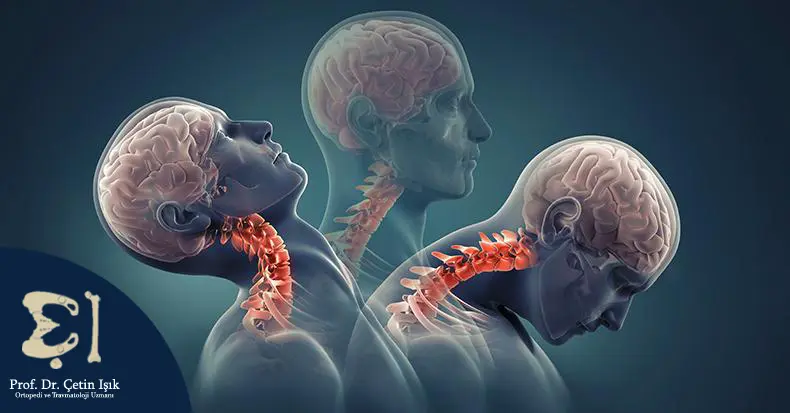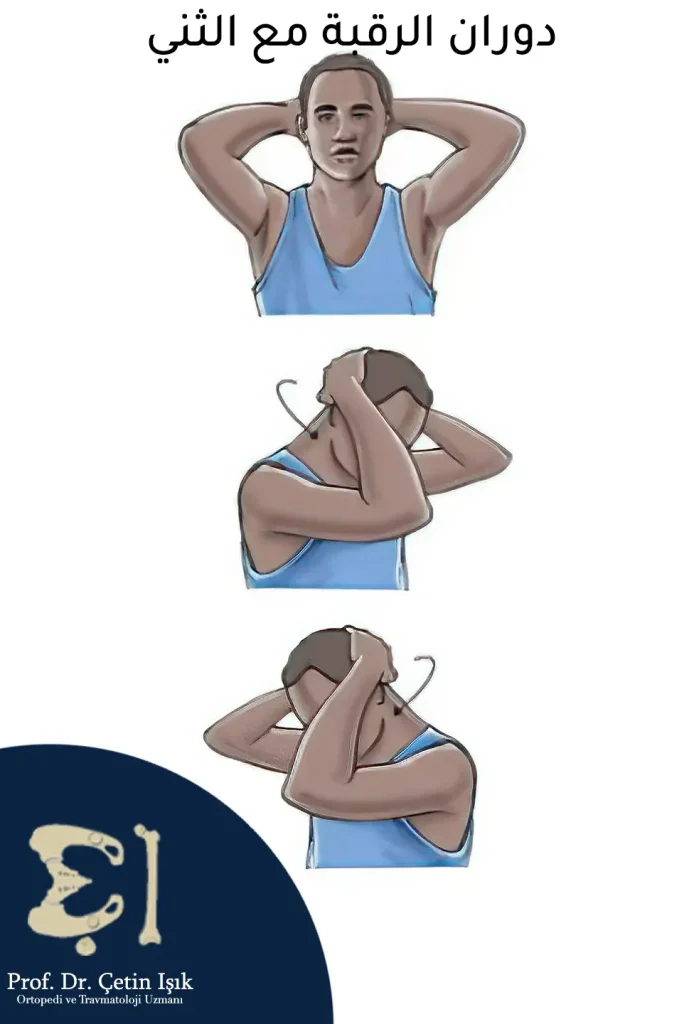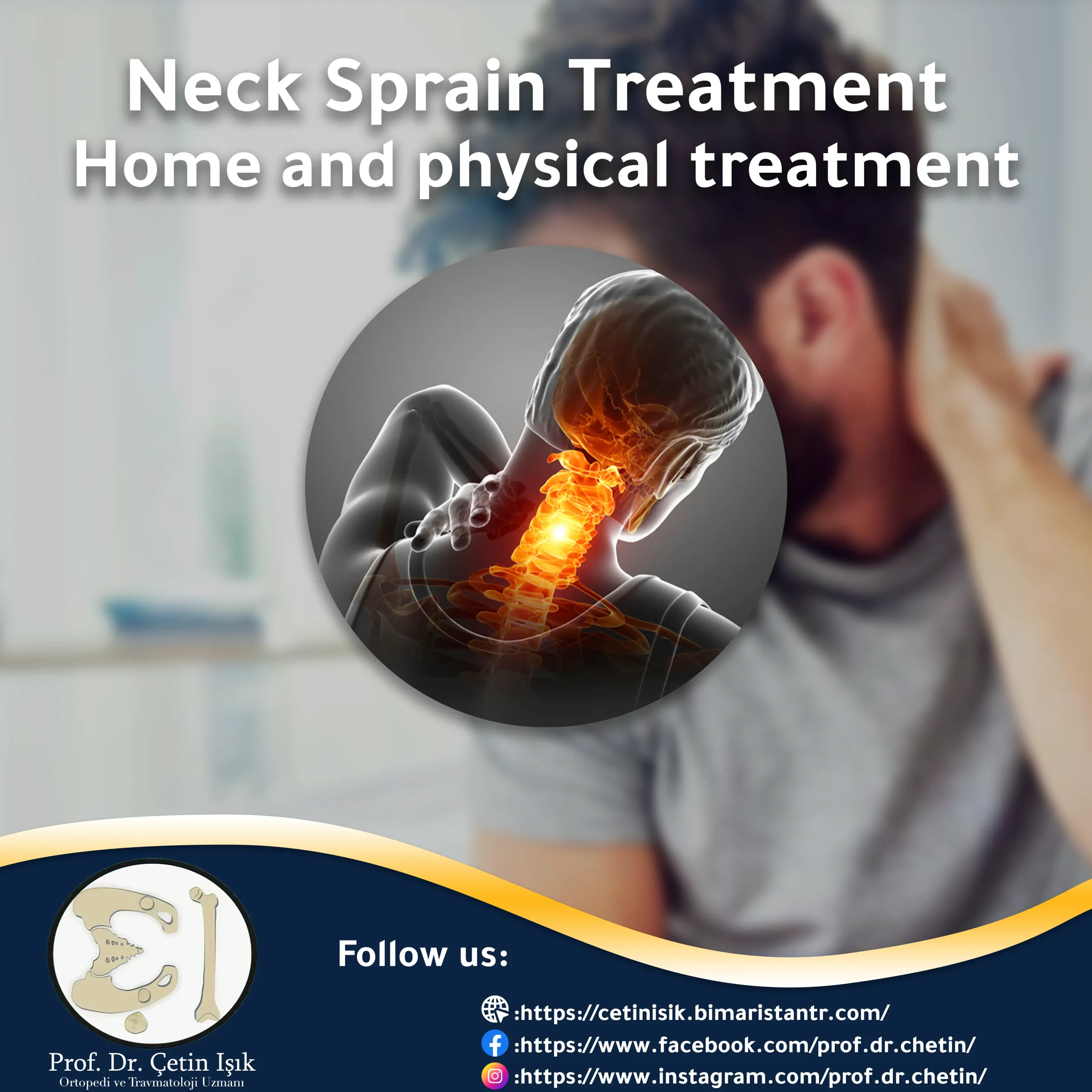Neck spasm is a common condition characterized by sudden, involuntary and painful contractions of the neck muscles, making them stiff and difficult to move normally, which affects a person’s life and activities.
Neck spasms are caused by prolonged poor posture and overuse of the neck muscles, and symptoms usually last from several minutes to several weeks.
The importance of neck spasms lies in the possibility that they are a symptom of a disease that has serious complications, such as a herniated cervical disc. Learn about the causes of neck spasms and how to treat them.
What is a neck spasm?
Neck spasm is an involuntary and sudden contraction of the neck muscles due to many causes, leading to the appearance of symptoms. Neck spasms occur frequently as a result of spending long periods of time on mobile phones and computers and sleeping in inappropriate positions, in addition to their common occurrence in the elderly due to their weak muscles, thus increasing the risk of neck spasms.
During a spasm, neck pain occurs in the form of trigger points (painful spots where the spasming muscles are), in addition to difficulty moving the neck and shoulders, and it may be accompanied by headache and dizziness as a result of affected brain perfusion.
Most cases of neck spasm go away on their own, but some home treatment methods can help relieve spasms and reduce their recurrence through rest and the use of hot and cold compresses and pain relievers, in addition to physical therapy exercises that strengthen the muscles and increase their flexibility.

Causes of neck spasm
Causes of neck muscle spasm include:
- Poor neck posture: Poor neck posture for a prolonged period may increase the risk of Muscle spasm, such as a forward-bent neck position when using electronic devices and reading
- Muscle stress: Repeated muscle stress, such as making repetitive movements or lifting heavy objects, can increase the incidence of neck spasms
- Stress: Psychological stress can lead to muscle tension and increase the possibility of muscle spasm when exposed to stress
- Neck injuries: Neck injuries that occur as a result of car accidents or sports accidents, such as whiplash (the head suddenly being thrown forward and then thrown back), may damage the skeletal structures in the neck, causing muscle spasm as a preventive measure.
- Sleeping position: An uncomfortable sleeping position may lead to neck spasms
- Nerve irritation: Irritation occurs as a result of pressure on the nerves, leading to spasm in the muscles that innervate them, as occurs in cervical radiculopathy caused by nerve compression (cervical disc herniation).

Symptoms of neck spasm
The symptoms that neck spasms can manifest vary depending on the cause of these spasms. Common symptoms include the following:
- Neck painSudden and severe pain may occur in the neck, which may worsen when moving it
- Difficulty moving the neck and shoulders: Neck spasm may lead to difficulty moving the head and shoulders due to muscle stiffness and tension, thus restricting head movement.
- Headache and dizziness: A headache can occur, which is often mild, and a spasm of the neck muscles may put pressure on the blood vessels that feed the brain, causing dizziness.
- A tingling feeling at the base of the neck: Neck nerves may be affected by spasms, leading to a tingling feeling at the base of the neck
- Painful spots in the neck (trigger points): Neck spasm may manifest as painful spots that occur at the sites of spasming muscles.
Diagnosis of neck spasm
Neck spasm is usually diagnosed through a clinical examination and asking about the accompanying symptoms that the patient feels. The doctor must also be informed of any recent injury to which the patient has been exposed, in addition to the activities practiced by the patient that may cause convulsions.
The doctor may request additional diagnostic methods for a more comprehensive evaluation and to find out the underlying cause of the spasticity. These methods include both X-rays (X-rays) to evaluate the spine, and magnetic resonance imaging (MRI) to evaluate the muscles, tendons, and ligaments of the neck.
How to treat neck spasm
The treatment of neck spasms is similar to the treatment of muscle spasms in general, as most cases of neck spasm resulting from muscle strain can often be treated with home treatment methods and physical therapy. Surgical treatment may be resorted to in some cases, such as Treatment of herniated disc.
Home (self) treatment
Options for treating neck spasm at home include:
- Neck stretching exercises: Neck stretching exercises help relax the muscles and relieve neck pain. These exercises are done by sitting in an upright position and looking forward, then the head is gently rotated to the right, placing the hand behind the head and pushing the chin towards the right side of the chest. This must be maintained Position for 15 seconds.
- Neck massage: Massage may help relieve muscle tension and reduce neck pain.
- Take over-the-counter pain relievers; Such as non-steroidal anti-inflammatory drugs (NSAIDs) such as ibuprofen. To relieve pain.
- Hot or cold compresses: Compresses help relieve inflammation and relax muscles.
Physical therapy
Our physical therapist can develop a personalized treatment plan for you that includes exercises and techniques to treat neck spasm and prevent it from recurring. Physical therapy and rehabilitation exercises include both neck rotation with flexion and neck rotation with extension.
Neck rotation with flexion
Right: Sit up straight and gently rotate your head to the right, then clasp your hands behind your head and push your head so that your chin pushes toward the right side of your chest. Maintain this position for 15 seconds and repeat the exercise 3 times.
On the left: Gently rotate your head to the left, then clasp your hands behind your head and push your head so that your chin pushes toward the left side of your chest, then maintain this position for 15 seconds and repeat the exercise 3 times.

Neck rotation with stretch
On the right: Rotate your neck to the right and look at your right shoulder, then place your left palm on the left side of your chin and gently push your chin toward your right shoulder
On the left: Rotate your neck to the left and look at your left shoulder, then place your right palm on the right side of your chin and gently push your chin toward your left shoulder

Preventing neck spasm
Although the occurrence of neck spasm cannot always be predicted and prevented, its incidence or recurrence can be reduced by following the following tips:
- Stretch your neck regularly to maintain flexibility and strength of your neck muscles
- Take frequent breaks if the nature of your work requires sitting for long periods
- Adjust the computer screen at eye level to avoid straining the neck muscles
- Avoid carrying heavy objects on one arm or shoulder
Neck spasm is a sudden contraction of the neck muscles due to stress, which leads to feeling pain and discomfort in the neck and the inability to move it, which affects your daily activities. Most cases can be managed and their recurrence prevented through home treatment and physical therapy.
Sources:
Common questions
Neck spasm can usually be eliminated through home treatment methods, which include stretching and massaging the neck, applying hot or cold compresses, and taking pain relievers when needed. Physical therapy exercises may also be used.
Common symptoms of neck muscle spasm include neck pain and difficulty moving the neck and shoulders. Headache, dizziness, and a tingling sensation at the base of the neck may occur, and the patient may feel painful spots in the neck (trigger points).
The duration of neck spasm varies depending on the underlying cause of the spasm. The spasm can last several days or weeks, and the duration of the spasm may reach several months.
Neck spasm can be serious if it is accompanied by a severe headache, dizziness, or numbness in the arm, as it may indicate a herniated disc in the neck.




